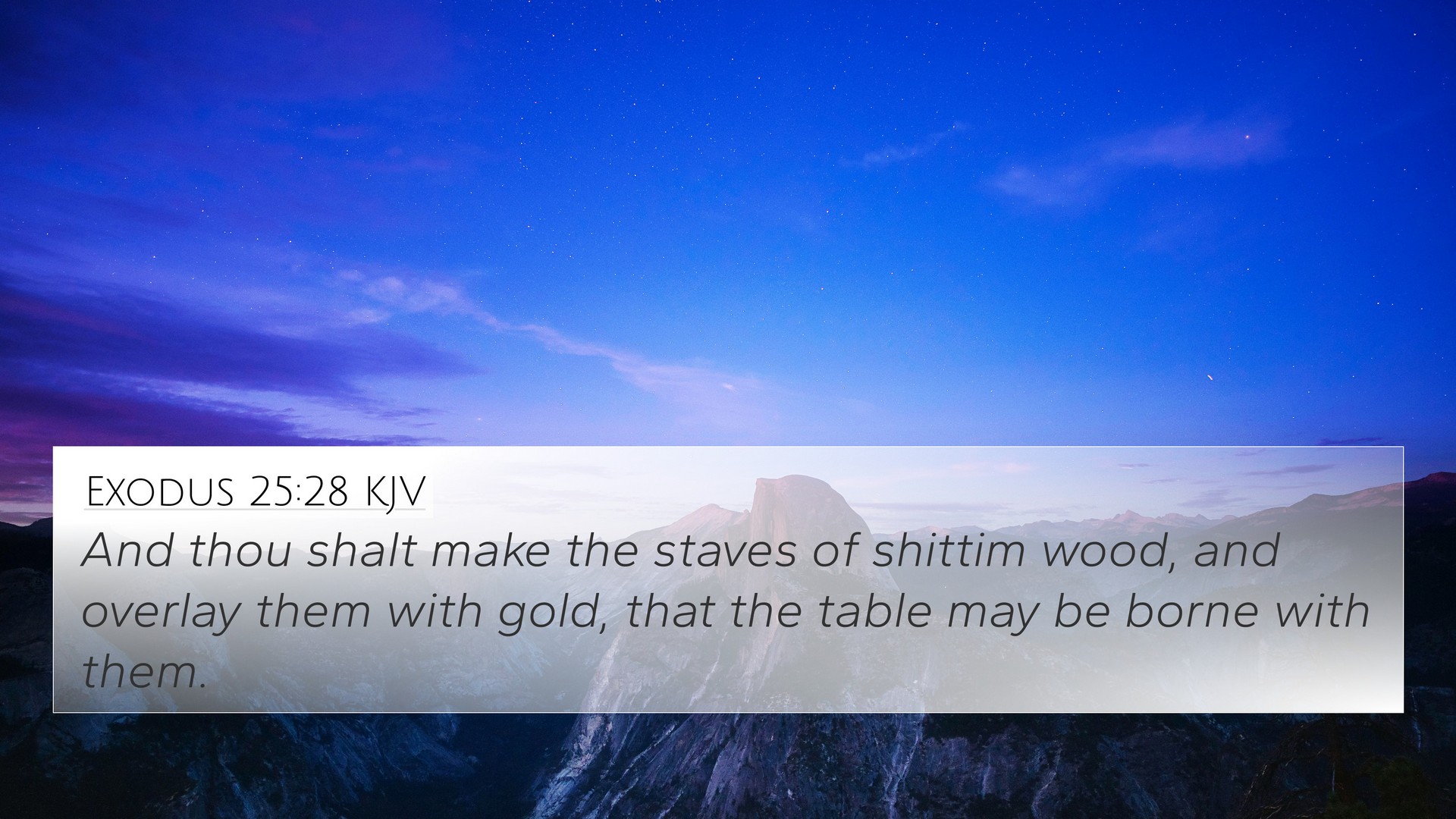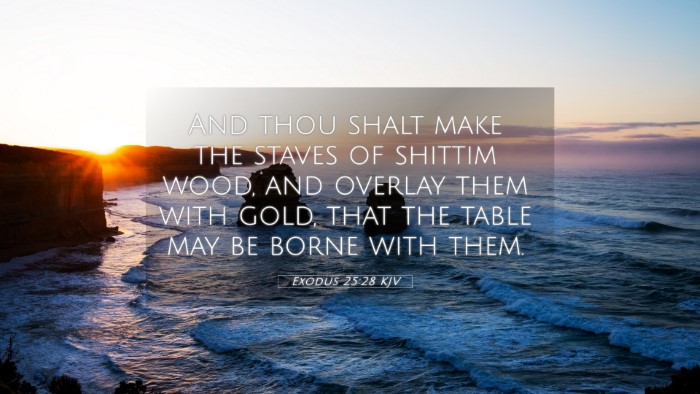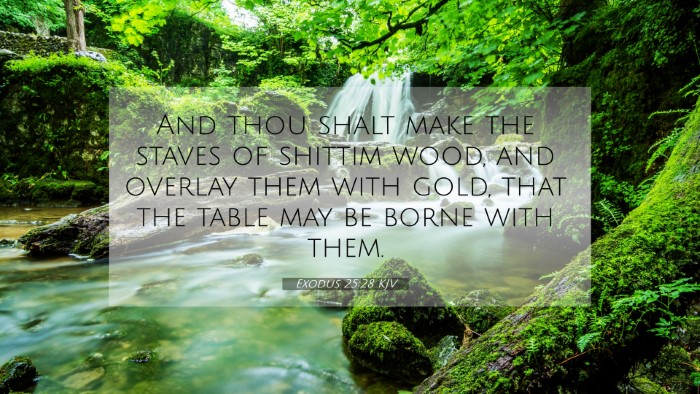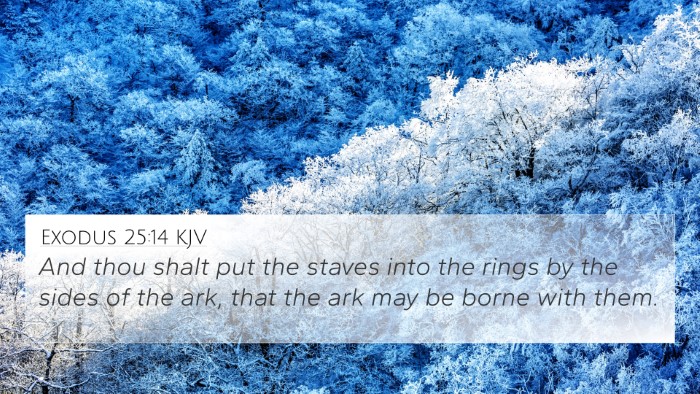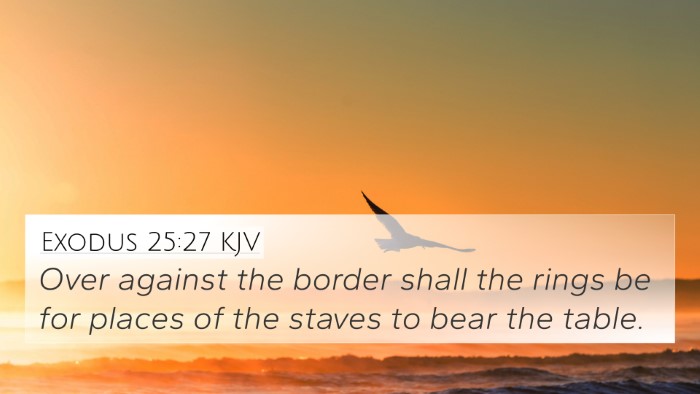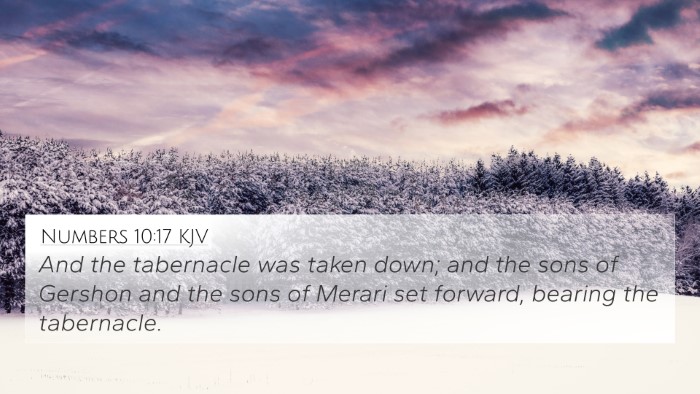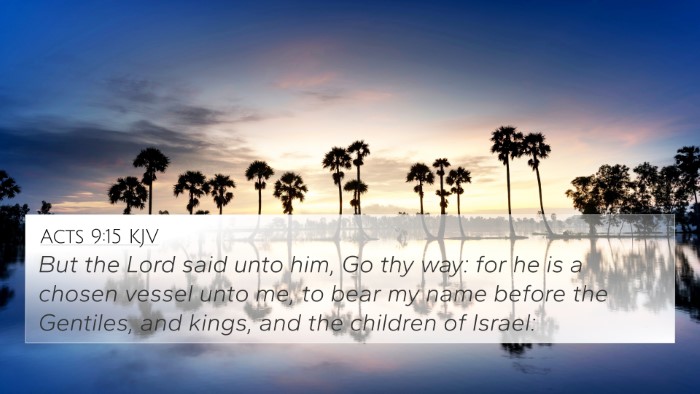Understanding Exodus 25:28
Exodus 25:28 states, "And thou shalt make for it staves of shittim wood, and overlay them with gold, that the table may be borne with them."
Meaning and Interpretation
This verse is part of the instructions given to Moses regarding the construction of articles for the Tabernacle, specifically the table for the showbread. The details emphasize not only the materials to be used but also the method by which these items were to be transported and handled.
Here are key insights from public domain commentaries:
-
Matthew Henry:
Henry highlights the significance of the staves, suggesting they symbolize the importance of carrying the sacred items with dignity and respect. The gold overlay represents divine holiness and beauty, affirming that God's presence demands the highest standards of reverence in worship.
-
Albert Barnes:
Barnes adds that the use of shittim wood signifies humanity and the gold overlay represents the divine. This duality illustrates the relationship between God and man, as the table reflects both earthly and heavenly significance.
-
Adam Clarke:
Clarke elaborates on the construction methods, stressing that the design serves practical purposes for transport, as well as the need for the priestly class to handle these sacred objects appropriately during their journeys through the wilderness.
Significant Cross-References
Several Bible verses connect to Exodus 25:28, illustrating common themes of holiness, worship, and divine instruction:
- 1 Chronicles 28:12: Discusses the divinely inspired plans for the temple's utensils.
- Hebrews 9:2: Mentions the tabernacle and the sacred items within, highlighting their significance.
- Exodus 37:4-5: Details the construction of the table, providing a parallel to Exodus 25:28.
- Leviticus 24:5-9: Refers to the showbread that was to be placed on this table, reinforcing its purpose in worship.
- Hebrews 9:6-7: Speaks about the rituals performed by the priests, linking the Old Covenant practices to the New.
- Matthew 26:26: Connects the significance of bread in the Last Supper to the showbread on this holy table.
- Revelation 21:18: References gold as a representation of divine glory in the New Jerusalem, echoing the use of gold in the tabernacle.
Thematic Connections
The themes arising from Exodus 25:28 reflect broader narratives throughout Scripture:
- Holiness: The materials used point to the necessity of purity and sanctity in worship.
- Divine Presence: The instructions signal that God’s presence is to be treated with utmost respect.
- Worship and Service: The logistics of carrying the holy items relate to a life of worship that serves God’s purposes.
Tools for Bible Cross-Referencing
For those interested in exploring the connections between Bible verses or conducting a comparative Bible verse analysis, consider using:
- Bible concordances to identify related passages.
- Bible cross-reference guides to enhance understanding of particular themes.
- Cross-reference Bible study for in-depth textual comparison.
- Comprehensive Bible cross-reference materials for extensive thematic exploration.
- Bible reference resources to find parallels across different scriptures.
Identifying Connections
When analyzing how to find cross-references in the Bible, consider the following methods:
- Study the context of the verses to uncover thematic links.
- Review notes in Bible commentaries that highlight cross-referenced themes.
- Utilize digital tools and applications for quick reference.
- Engage in a cross-referencing Bible study to deepen your understanding.
Conclusion
Exodus 25:28, with its intricate instructions for constructing the table of showbread, serves as a powerful reminder of the importance of reverence in worship and the beauty of God’s commandments. Through the careful study of this verse and its connections, believers are invited into a deeper understanding of God’s holiness and the sacredness of worship practices.
In delving into cross-referenced themes, the inter-Biblical dialogue enriches our comprehension of scripture, establishing links that lead to a fuller appreciation of God’s redemptive plan.
